Are flexible busbars necessary when DIYing a Lifepo4 battery?
17 Nov 2025
0 comment
Embarking on the journey of building your own Lithium Iron Phosphate (Lifepo4) battery pack is an exciting endeavor. It promises customization, cost savings, and the deep satisfaction of creating a critical power source with your own hands. Whether it's for a solar power system, an electric vehicle conversion, a marine application, or a robust off-grid power bank, the details matter immensely. Among the myriad of components—cells, BMS, enclosure—lies a seemingly simple but critically important decision: the busbars. Specifically, a question that often surfaces in DIY forums and workshops is, are flexible busbars a necessary investment, or are they an over-engineered solution for a problem that doesn't exist? As we delve into the world of DIY battery assembly, the choice of busbars emerges as a pivotal factor that can mean the difference between a pack that lasts for years and one that fails prematurely. This article will provide a comprehensive analysis to help you make an informed decision.
- Understanding the Role of Busbars in Your Battery Pack
- The Critical Problem: Why Cell Swelling Matters
- The Solution: How Flexible Busbars Mitigate Risk
- Practical Considerations for the DIY Builder
- Cost-Benefit Analysis: Are They Worth the Investment?
- Conclusion: A Necessary Evolution in DIY Battery Building
Understanding the Role of Busbars in Your Battery Pack
Before we can tackle the question of flexibility, it's crucial to understand what busbars do. In essence, a busbar is a strip or bar of conductive material, typically copper or aluminum, that serves as a central node for distributing high electrical current. In a multi-cell Lifepo4 battery pack, where cells are connected in series and parallel to achieve the desired voltage and capacity, busbars are the vital links that carry power from one cell to the next and ultimately to the output terminals.
Their primary functions are:
- Electrical Conductivity:To provide a low-resistance path for current flow, minimizing energy loss as heat.
- Structural Connection:To physically and electrically join the individual cells into a cohesive unit.
- Current Carrying Capacity:To be sized appropriately to handle the maximum continuous and peak current without overheating.
A failure in any of these functions can lead to reduced performance, safety hazards, or complete pack failure. Therefore, the selection of busbars is not a place to cut corners.
The Two Main Contenders: Rigid vs. Flexible Busbars
The DIY community largely debates between two primary types of busbars:
1. Rigid Busbars: These are typically made from solid, flat strips of copper or aluminum. They are simple to manufacture or source, and they offer excellent conductivity for their cross-sectional area.
2. Flexible Busbars: These are composed of multiple thin layers of electrolytic copper foil laminated together. They are often tinned for corrosion resistance and remain highly pliable, allowing them to bend and flex easily.
The core of the "flexible vs. rigid" debate stems from a fundamental characteristic of the battery cells themselves: expansion and contraction.
The Critical Problem: Why Cell Swelling Matters
Lifepo4 chemistry is renowned for its stability and safety compared to other lithium-ion chemistries. However, it is not immune to a natural physical phenomenon. During charging and discharging, the internal materials of any lithium-based cell undergo slight volumetric changes. This is a normal process.
- Charging: Lithium ions move from the positive electrode (cathode) to the negative electrode (anode), causing the anode to expand slightly.
- Discharging: The ions move back to the cathode, causing the anode to contract.
This "breathing" effect is minimal in Lifepo4 but is not zero. Over time, and especially under high-stress conditions like high C-rate charging/discharging or extreme temperatures, this micro-movement can accumulate. Furthermore, if a cell ever goes out of its Safe Operating Area (SOA) and experiences gassing or more significant swelling, the physical stress on its connections becomes severe.
How Rigid Busbars Amplify This Problem
When you use solid, rigid busbars to connect cells that are ever-so-slightly changing dimensions, you create a mechanical struggle. The rigid busbar wants to stay in its fixed position, but the cell terminals want to move.
The consequences are serious and multifaceted:
- Stress on Cell Terminals: Constant tension, compression, and shear forces are applied to the cell's terminals. For prismatic cells with aluminum terminals, these are often the weakest mechanical point. Repeated stress can lead to terminal fatigue, loosening, or in worst-case scenarios, shearing off the terminal entirely, rendering the cell useless and creating a dangerous situation.
- Loosening Connections: The constant push and pull can cause the nuts and bolts securing the busbar to loosen over time. A loose connection is a bad connection. It creates a point of high electrical resistance.
- The Vicious Cycle of Heat: A loose, high-resistance connection generates intense heat when current flows. This heat can damage the cell's internal seals, accelerate degradation, and in some cases, lead to thermal runaway. The heat also causes thermal expansion, which can further loosen the connection, creating a positive feedback loop of failure.
This is the fundamental weakness of a rigid busbar system: it fails to accommodate the natural, dynamic behavior of the cells it is connecting.
The Solution: How Flexible Busbars Mitigate Risk
Flexible busbars are engineered specifically to address the challenges posed by cell movement. Their design philosophy is one of harmony rather than resistance.
- Strain Relief: The inherent pliability of a flexible busbar acts as a mechanical shock absorber. It allows the busbar to flex and bend slightly in response to the expansion and contraction of the cells. This movement is absorbed by the busbar itself, rather than being transferred as destructive force to the cell terminals.
- Maintaining Consistent Pressure: By accommodating movement, flexible busbars help maintain a more consistent and uniform pressure on the terminal connection. This ensures that the electrical contact remains tight and low-resistance over the entire lifespan of the battery pack.
- Vibration Resistance: In mobile applications like RVs, boats, or EVs, vibration is a constant factor. Flexible busbars are far superior at dampening vibrations, preventing the connections from shaking loose over thousands of miles of travel.
In essence, flexible busbars decouple the mechanical stress from the electrical connection. They allow the cells to "breathe" without compromising the integrity of the electrical path.
Dispelling Common Myths About Flexible Busbars
Some DIYers are hesitant to adopt flexible busbars due to prevalent myths. Let's clear them up.
Myth 1: "Flexible busbars have higher resistance than solid ones."
This is a misunderstanding of how electricity flows in conductors. A properly sized flexible busbar, with a cross-sectional area equal to or greater than a rigid one, will have virtually identical resistance. The current flows through the massive surface area of the laminated copper foils with ease. The key is ensuring the size is correct for your amperage.
Myth 2: "They are less reliable and can break from repeated flexing."
A quality flexible busbar is designed for this specific purpose. The lamination process and the use of high-purity, annealed copper make it extremely resistant to fatigue failure from the tiny, infrequent movements in a battery pack. It is not designed to be flexed constantly like a hinge, but rather to absorb micro-movements over years.
Myth 3: "They are just a marketing gimmick for a non-issue."
While it's true that a perfectly treated, low-stress Lifepo4 cell in a lab environment might show minimal swelling, real-world conditions are different. Temperature fluctuations, high discharge rates, and the simple reality of manufacturing tolerances mean cells *will* move relative to each other. Ignoring this is a gamble with your investment.
Practical Considerations for the DIY Builder
So, you're convinced of the theoretical benefits. What does this mean for your build?
When Are Flexible Busbars Absolutely Essential?
There are certain scenarios where the use of flexible busbars transitions from "highly recommended" to "non-negotiable":
- Large Prismatic Cells: The larger the cell (e.g., 100Ah, 280Ah, 304Ah), the greater the potential for volumetric change and the more mass is pushing and pulling on the terminals.
- High-C Rate Applications: Pushing high currents in and out of the pack (e.g., in an EV or a power-hungry inverter system) accelerates the expansion/contraction cycles.
- Environments with Wide Temperature Swings: If your battery will be in an uninsulated garage, a van, or a marine environment, thermal expansion alone will cause significant movement.
- Vibration-Prone Applications: Any vehicle, boat, or mobile power system.
- Packs with Many Cells in Series: The cumulative effect of tiny movements across many cells can be significant.
Sourcing and Installing Flexible Busbars Correctly
You have two main paths:
1. Pre-made Flexible Busbars: Many reputable battery component suppliers now offer pre-tinned, pre-punched flexible busbars specifically for common cell sizes like 280Ah. This is the easiest and most reliable option for most builders.
2. DIY Flexible Busbars (Advanced): For those who want a perfect custom fit, you can source rolls of flexible copper braid or laminated foil and fabricate your own. This requires a good crimping tool, lugs, and possibly a spot welder, and carries more risk if done incorrectly.
Installation is Key: Whether using pre-made or DIY, proper installation is critical.
- Torque: Always use a calibrated torque wrench. Over-tightening can strip the soft aluminum threads of the cell terminals. Under-tightening creates a high-resistance connection. Follow the cell manufacturer's torque specification (often as low as 4-6 Nm for aluminum terminals).
- Hardware: Use serrated flange nuts or Nord-Lock washers to prevent loosening from vibration. Always use a flat washer between the nut and the busbar.
- Inspection: Periodically (e.g., every 6-12 months) inspect the connections for any signs of discoloration, corrosion, or looseness.
Cost-Benefit Analysis: Are They Worth the Investment?
Let's be frank: flexible busbars are more expensive than a simple strip of copper from a hardware store. A set of flexible busbars for a 16-cell 48V pack might cost $50-$100, whereas rigid copper strips might be $10-$20.
However, consider the cost of failure:
- The cost of a single 280Ah Lifepo4 cell: ~$120-$180.
- The cost of a Battery Management System (BMS): ~$100-$300.
- The cost of your time and labor to build the pack: Priceless.
- The potential cost of a fire or failure damaging other equipment: Catastrophic.
Weighing a slightly higher initial investment in robust, reliable busbars against the risk of losing a single cell (let alone the entire pack) makes the economic case for flexibility overwhelmingly strong. It is a form of cheap insurance for a very expensive and critical asset.



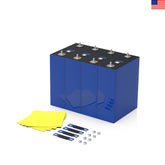
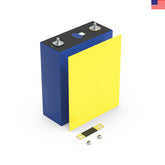
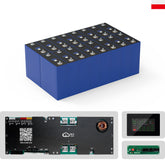







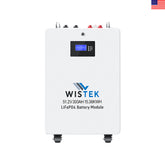
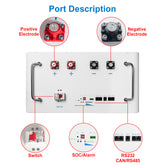

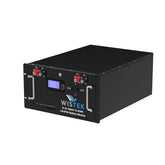


Leave a comment
All blog comments are checked prior to publishing